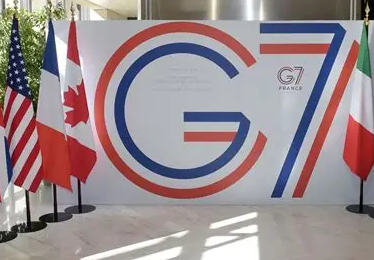
由 Jingyi 人工翻译。
贸易战之后剩下什么?
第二届特朗普政府,试图重写国际贸易系统,以及急于交付交易,在自己的展期 7 月 9 日到来之前。但是,交易最终会和白宫达成吗?
很难以预测,贸易政策下周的走向,但是我询问了三位专家,未来全球贸易系统会是什么样的,一旦特朗普离开政界。整个世界会回到特朗普之前的交易规则吗?或者我们是在新时代吗?他们的答案千奇百怪,但是他们提出了 4 个可能。
这些可能依赖于两大因素,第一,美国是否决定维持更多贸易保护者,以及隔离动作?或者美国是否愿意重新修复贸易关系。第二,人们是否会回到地理意义上自己的区域。
第一个场景,美国倾向于重新致力于事业,以及移除障碍,或者重新声称遵守 wto 规则。“设计世界贸易系统最好的意见,针对21世纪,英国无处不在的二战标语:Keep Calm and Carry On”贸易经济学家 Robert Staiger 说到,他 2022 年写了一本书《21世纪的世界贸易系统》,这样背景下,美国和全世界都会采取他的意见。
“我们无缘由地做了一些伤害自己的事情” Kimberly 说到,一位资深员工说到,他在 Peterson 咨询机构工作,主要关注国际经济,以及目前的贸易战。她说,让美国政府称赞贸易系统创造的福利是有可能的,特别是会引起通胀或衰退的关税。
可能,但并不是很可能。“正在发生的,可能要比特朗普想象的多”Staiger 说到。“美国回到没有支持的状态,支持美国致力于建立的、基于规则的贸易系统”他说,这个过程特朗普已经打了很多预防针(steroid),但是他坚信这是从奥巴马政府开始的,当时美国政府拒绝重新安排法官,解决 wto 在案的争议。
下一届美国政府也不可能单方面移除所有特朗普关税,无论是哪个党派。Josh Lipsky 说到,大西洋咨询公司地缘经济中心的资深总监,这是一家智库公司。这篇文章作者之前是这家中心的编辑。“我们处于更具有保护主义色彩的美国”他说,这是任何时候都不可能很快改变的。
如果美国保持更加保护主义立场,世界其他国家仍然倾向于维持世界贸易规则。Clausing 和 Staiger 同事说到。这是非常粗犷的场景,经济学家保罗·克鲁格曼反驳,“世界级秩序又少了一个”最近播客说到。中国最大挑战,Clausing 说到,“有机会长成,更加基于规则”才能获得其他国家信任,通过向 wto 重新递交申请的方式。
但是,Lipsky 说,也不大可能。“大多数国家,从全球贸易体系逐渐终止所产生的痛楚,很多国家已然越过了一开始被否认的阶段,逐渐开始被接受,这个过程经过好几个阶段才起作用”。他见证了全球贸易,按照地缘区进行划分。如果美国重新介入,这意味着重新被点燃的 G7 领导的全球贸易谈判 —— 可能在 wto 的赞助之外,很可能对技术有特殊关注,以及开始算入中国的部分。
第四个场景,美国已经回撤,甚至欧盟也开始决定放弃 wto,欧盟可能加入 加、澳、墨、韩、日的贸易联盟,形成新的贸易区域,称为 EU+。在这个场景,贸易很容易流入非成员区域。EU+ 竞争对手是规模比较类似的金砖四国,由中国牵头。第三区域就是美国,仍然占据全球 1/4 GDP。当我和 Staiger 整理这些资料的时候,他建议我参考 1989 年的 Krugman 论文。这些资料中刻画了贸易区效应,以及发现最差的可能,就是精准地划分三大贸易区。
auspices 赞助
作者 Walter Frick
What Comes After the Trade War
The second Trump administration is attempting to rewire the global trading system, and rushing to deliver trade deals ahead of its self-imposed July 9 deadline. But will the deals struck by the White House last?
It’s hard enough to predict what trade policy will be next week, but I asked three experts what the global trading system will look like once Trump has departed the political scene. Will the world return to something like its pre-Trump trade rules, or are we in a new era? Their answers varied, but together they suggest four possible scenarios.
Which we end up with depends on two factors: The first is whether the US decides to maintain a more protectionist and isolationist posture, or whether it seeks to repair its trading relationships. The second is whether the rest of the world recommits to the global rules outlined by the World Trade Organization, or whether countries retreat into geopolitical blocs.
In the first scenario, the US opts to reengage and to remove trade barriers, and recommits to following WTO rules. “The best advice for designing a world trading system for the twenty-first century… [is] Britain’s now-ubiquitous wartime slogan from World War II: Keep calm and carry on,” wrote trade economist Robert Staiger in his 2022 book A World Trading System for the Twenty-First Century. In this scenario, both the US and the world take his advice.
“We’ve done something bad to ourselves for no reason,” says Kimberly Clausing, a senior fellow at the Peterson Institute for International Economics, of the current trade war. It’s possible, she says, that the US comes to appreciate the benefits of the trading system that it created — especially if tariffs cause significant inflation or a recession.
Possible, but not necessarily likely. “What’s happening is something that is bigger than Trump,” says Staiger. “The US is backing away from support for a rules-based trading system that it helped create,” he says — a process that Trump put on steroids but that he believes began as early as the Obama administration, which declined to reappoint judges to the WTO’s dispute resolution board.
The next US president is unlikely, whatever their party, to unilaterally remove all of Trump’s tariffs, says Josh Lipsky, senior director at the Atlantic Council’s GeoEconomics Center, a think tank. (I was previously an editor at the Center.) “We are in a more protectionist US environment,” he says, and that’s unlikely to change anytime soon.
If the US maintains a more protectionist stance, the rest of the world could still opt to stick with the global trading rules, Clausing and Staiger both say. This is roughly the scenario that economist Paul Krugman dubbed “World Order, Minus One” in a recent podcast. The biggest challenge here is China, which Clausing says “has an opportunity to be the grownup, to be a little more rules-based” and to gain other countries’ trust by recommitting to the WTO.
But that’s not likely either, says Lipsky. “Most countries are working through various stages of grief over the end of the global trading system and many are moving past the initial denial and moving into acceptance,” he says. He sees global trade dividing into geopolitical blocs. If the US reengages, that could mean a revitalized G-7 leading trade negotiations — perhaps outside the WTO’s auspices and likely with particular attention to technology and to countering China.
In the fourth scenario, where the US withdraws and even the EU decides to give up on the WTO, the EU could join with allies like Canada, Australia, Mexico, South Korea and Japan to forge a new trading bloc — call it EU+. In such a scenario, trade would flow easily within blocs but not between them. The EU+ would be rivaled by the similarly-sized BRICS+, led by China. And then the third bloc would be the US — still a quarter of global GDP on its own. When I raised this scenario with Staiger, he pointed me to a Krugman paper from 1989. It models the effects of regional trading blocs, and finds that the worst possible outcome is to have precisely three.
—— Walter Frick, Bloomberg Weekend
原文链接
长按/扫码,有您的支持,我们会更加努力!


|
